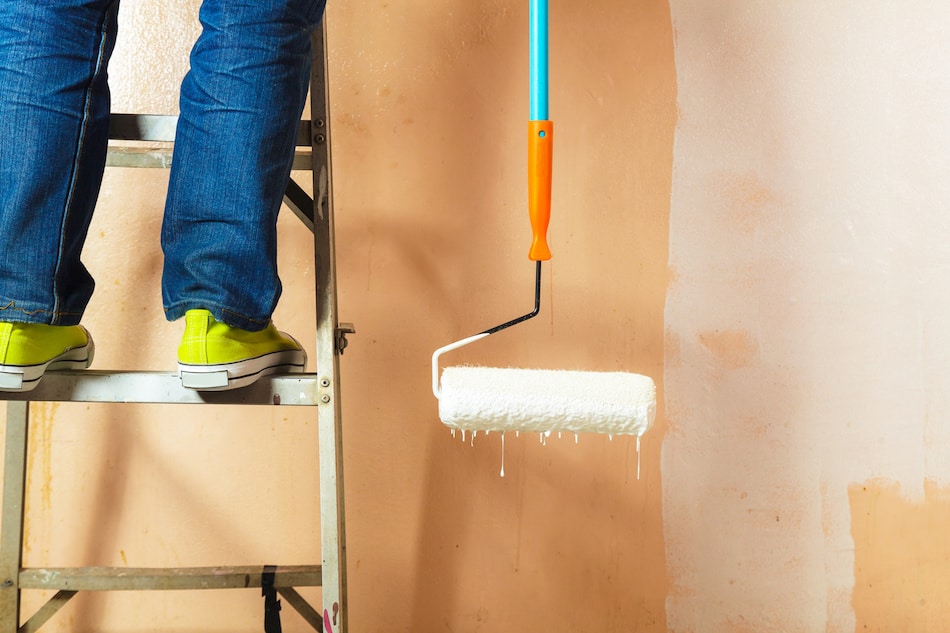
When to Paint a Home’s Interior Before Selling
 Making home improvements before putting a house on the market can help the property sell quickly and for more money. Knowing when to repaint, what colors to choose and how to apply paint to the walls in a way that looks professional and attractive can help you prepare the home to be listed.
Making home improvements before putting a house on the market can help the property sell quickly and for more money. Knowing when to repaint, what colors to choose and how to apply paint to the walls in a way that looks professional and attractive can help you prepare the home to be listed.
When Repainting Is Important
Not everyone needs to repaint before putting their house up for sale. In some cases, repainting is a waste of time and money. Knowing when it’s a good idea to repaint is important.
-
The walls are stained, scratched, scuffed or damaged. Walls can take a beating over the years. In rooms like the kitchen, the walls may also develop a layer of grease and grit that can make the kitchen look dingy and dirty. Cleaning the walls and applying a fresh coat of paint can help the room look clean again.
-
There are many nails in the walls and “ghosts” of old picture frames. Some homeowners like to hang wall art. Over time, this can leave nails in the walls and can even leave behind the outline of old framed pictures. The best way to handle this problem is to remove the nails, fill in the holes with spackling, then paint over the walls when the spackling is dry.
-
The wall has soot on it. Fireplaces can leave the walls of a room dark and dirty from soot. Although cleaning the walls can help, repainting is even better.
-
The walls are a color that is very dark, bright, dated or overwhelming. As a general rule, home buyers don’t like to be overwhelmed by the color of a room’s interior. Vibrant or overpowering paint colors can be distracting. Repainting the walls can help home buyers focus on the good things about a property.
-
The house itself needs to be cleaned and refreshed. Homes that have been shut up for a long time can take on a stale, unpleasant odor that might be off-putting to some home buyers. Some odors may even be absorbed into the walls. Applying a fresh coat of paint can cover these odors and make the home more presentable to buyers.
Choosing a Color
Choosing the right color to paint your walls is important. Buyers respond well to neutral colors because neutrals are easy to match to furniture, curtains and other personal affects that buyers might bring with them when they move. In addition, neutral colors are universally acceptable. Many people don’t love or hate neutrals, which means that painting your walls in colors like white, cream, beige and gray will give the home you’re trying to sell a universal appeal.
DIY Painting Tips
If you’re planning to paint walls on your own without help from a contractor, doing a good job is very important. A good paint job can attract buyers and lead to quicker offers, while a sloppy paint job can distract buyers and lead them to wonder about your home maintenance practices. The following tips can help:
-
Use good quality materials. From good paint to good paint brushes, using good quality materials will ensure that your walls will have better coverage.
-
Prep the surface properly before painting. Clean the walls, fill in all nail holes, smooth spackling with sandpaper and remove all vent covers before getting started with your paint project. In addition, painting the walls with a primer can make it easier to mask existing colors.
-
Protect the floors and nearby surfaces. Use tarps to protect all floors and surfaces that should not be exposed to paint. If possible, move all furniture out of the room before getting started.
-
Practice cutting in before getting started. “Cutting in” is the art of painting a straight line without using painter’s tape. Cutting in is the method that professional painters use to create straight edges. Cutting in is better than using painter’s tape to create a straight line, because paint can bleed under painter’s tape, leading to runs and sloppy edges.
-
Leave time to do touch ups after the job is finished. Many painters will accidentally leave patchy areas on the walls during the painting process. Doing touch ups at the end can help with this. To simplify the touch up process, wait several days after the paint job is finished before packing away the rest of the paint.
Talk To Your Real Estate Agent
If you’re not sure whether or not to paint your home’s interior, or if you’re wondering what other DIY projects can help your home sell more quickly, talk to your home’s agent. They can give you suggestions for staging and home repair that may help make your property appealing to buyers.



